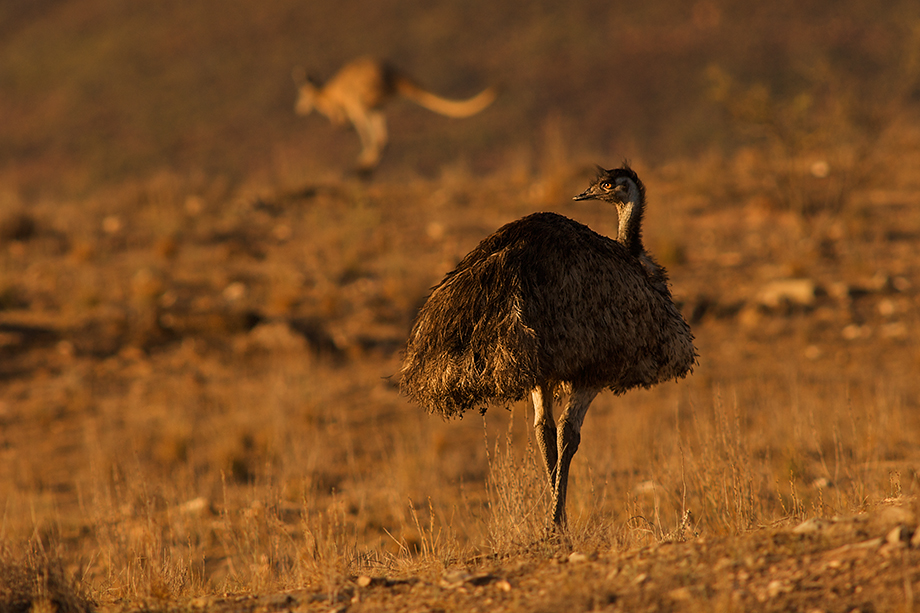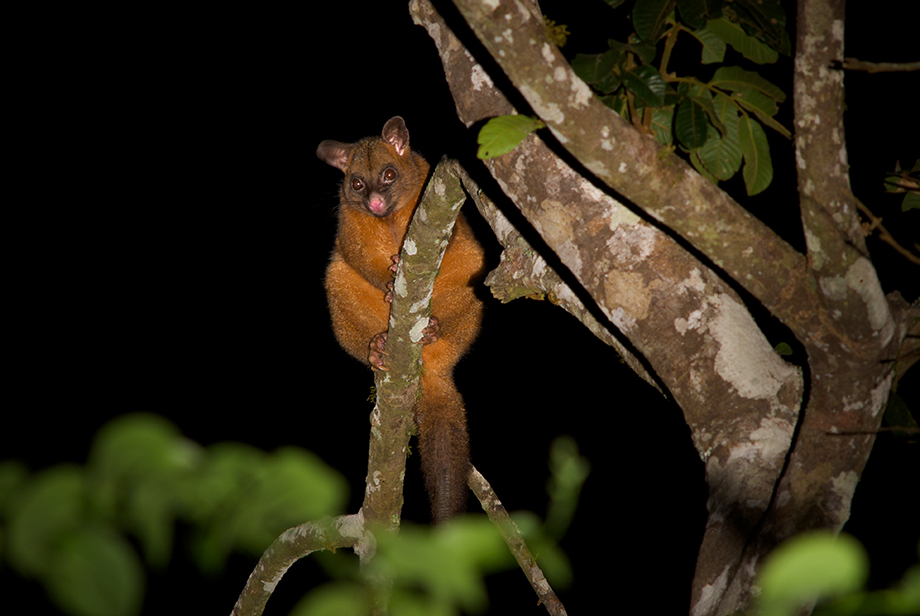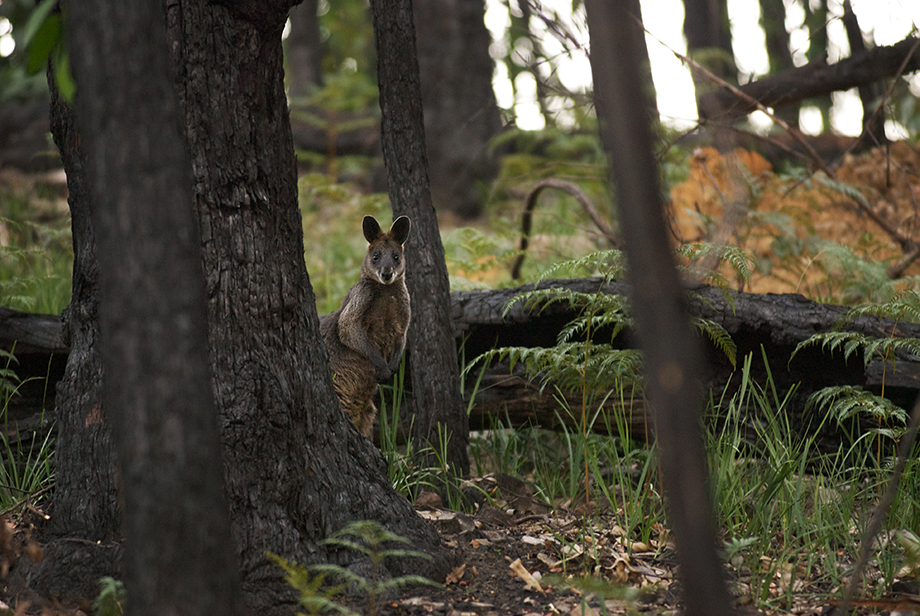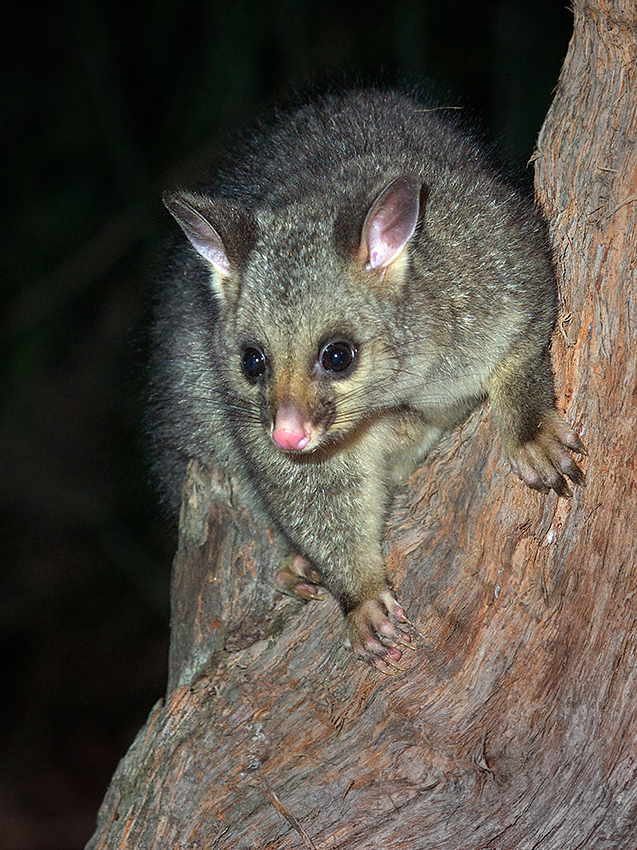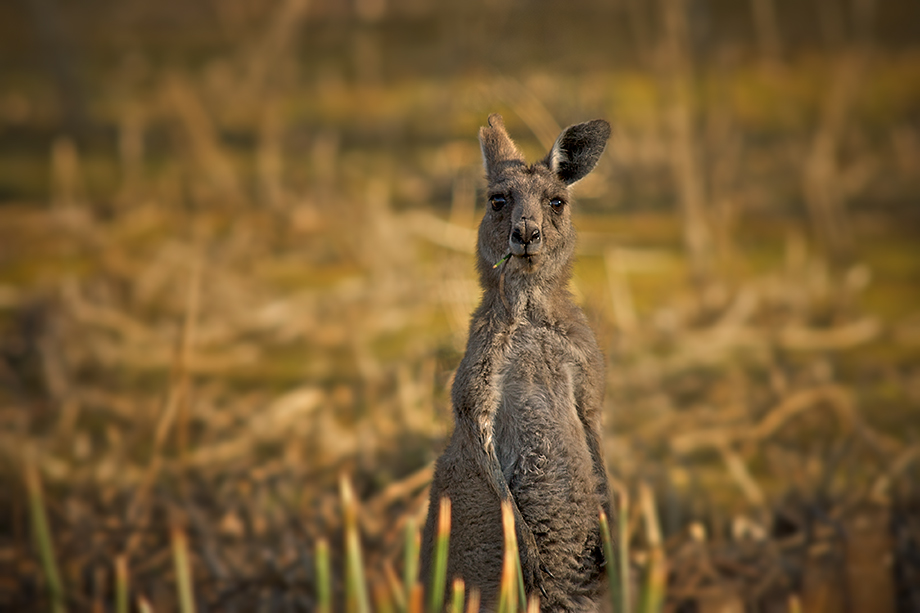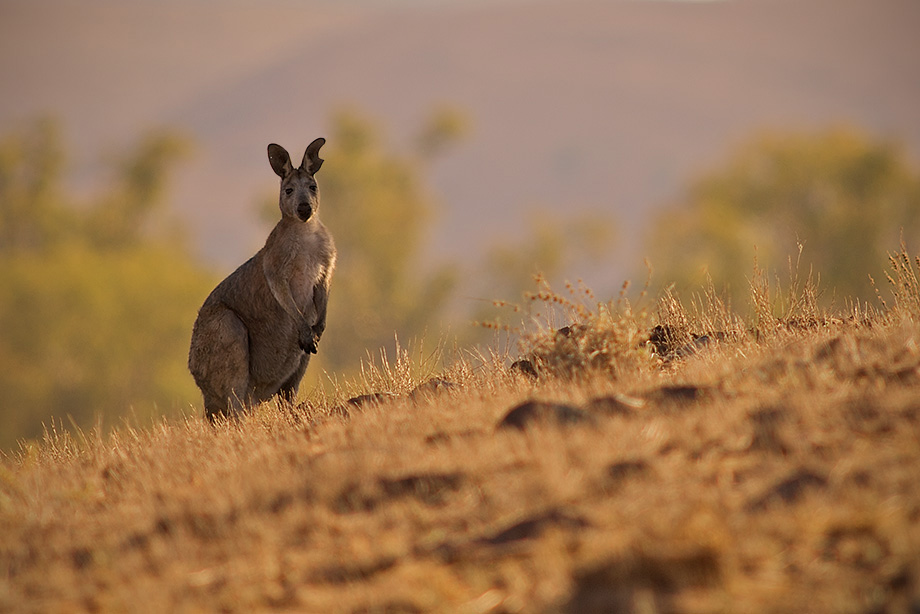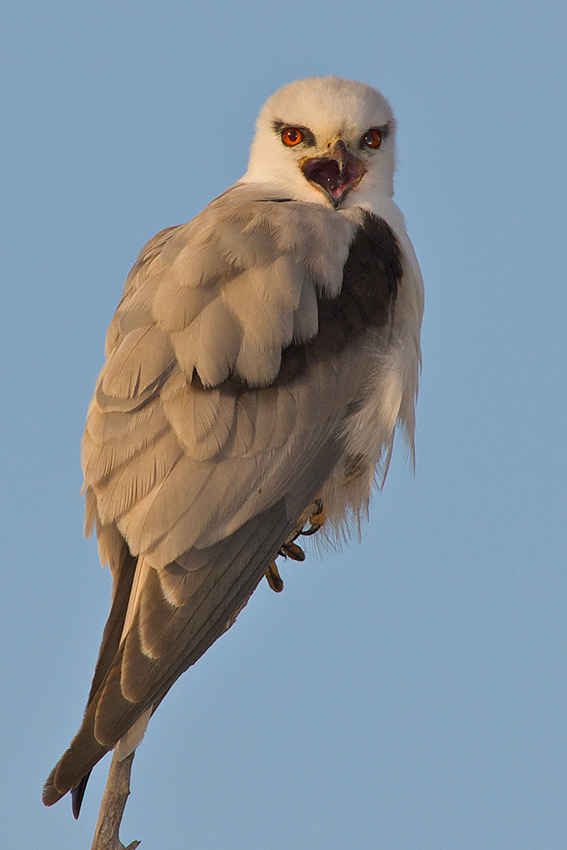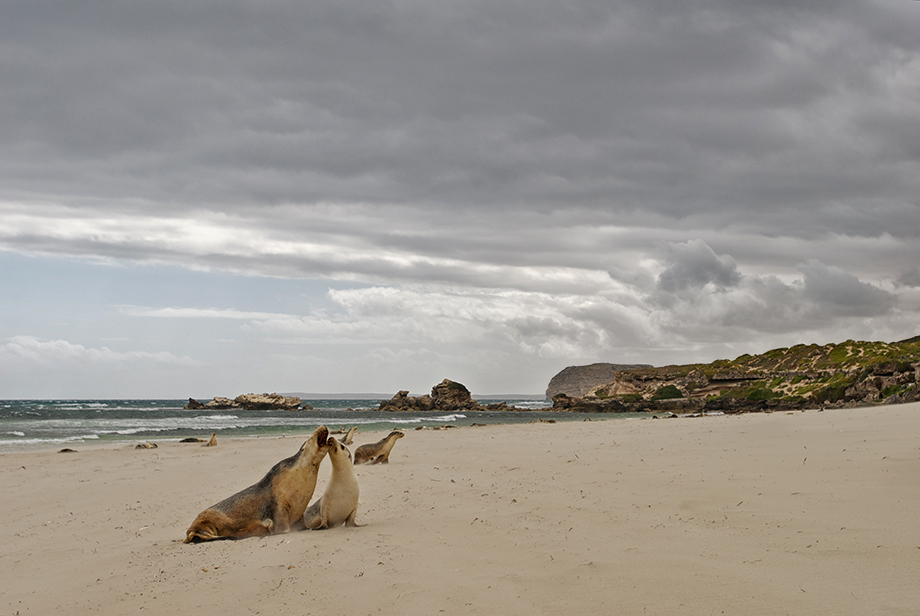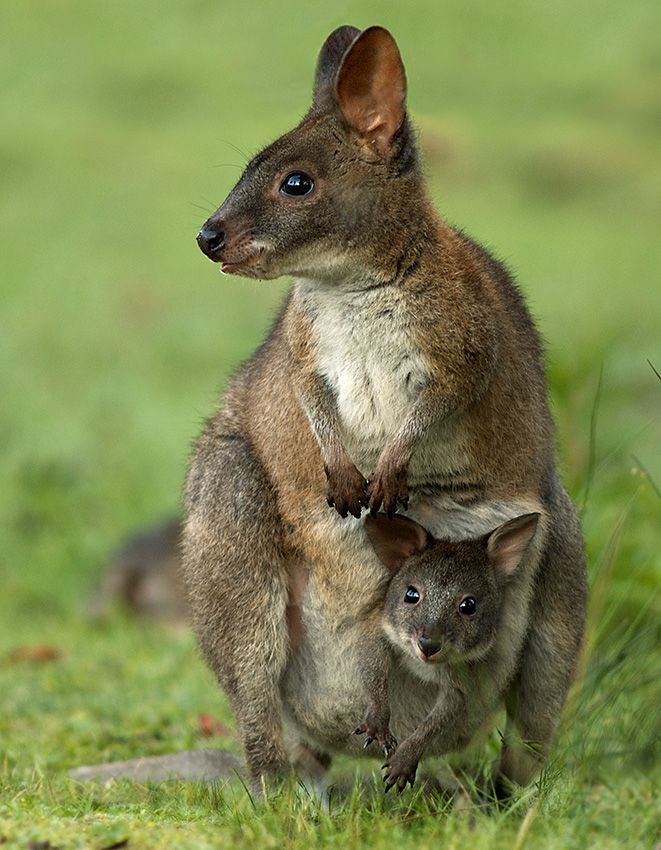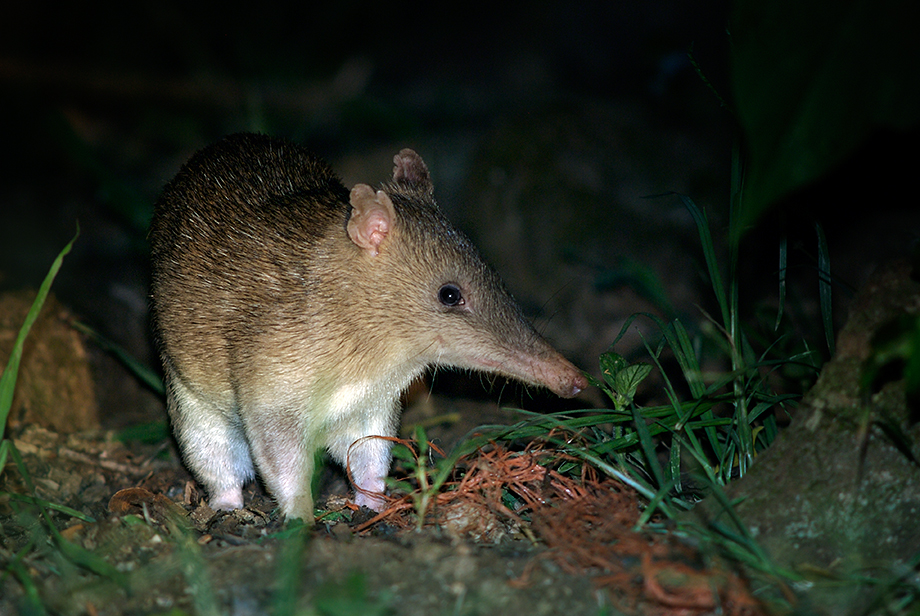Coppery Brushtail Possum

A while back I posted a common brushtail possum from Australia. Here is another species, the coppery brushtail. These guys are common in their home range, but that range is very small — restricted to the Atherton Tablelands area of Queensland in the northeastern part of the country. As you can see, it gets its name from the copper color of its fur — the common brushtail being much more grey.
Nikon D200 with Nikkor 600mm f/5.6 manual focus lens, ISO 200, f/11 at 1 second, Nikon SB-800 flash
Swamp Wallaby

This little guy has many names — the swamp wallaby, the black wallaby, fern wallaby, black pademelon, and my personal favorites, the black stinker, or simply, the stinker. it’s a small macropod species, usually solitary and nocturnal. Lucky for the swamp wallaby — and probably a reason why it is also called the stinker — the Aboriginal people of Australia find it to be inedible due to its smell and taste after cooking. But seriously, who in their right mind could eat this little guy.
Nikon D200 with Nikkor 80-200mm lens (at 200mm) ISO 800, f/2.8 at 1/40th of a second
Common Brushtail Possum

I feel for animals whose official name starts with the word “common.” As if they’re not as worthy of our attention. Thus is the case with Australia’s common brushtail possum. I guess it’s appropriate, however, as this is the most widely seen possum species not only in wild, forested environments of the country, but it is also seen quite regularly in urban areas. I much prefer the Latin name Trichosurus vulpecula, from the Greek for “furry tailed” and the Latin for “little fox.” As for the above furry-tailed-little-fox, he was spotted while creeping around in a tree outside of the lodge I was staying at on Kangaroo Island in South Australia.
Nikon D200 with Nikkor 80-200mm lens (at 155mm) ISO 200, f/5 at 1/60th of a second, Nikon SB-800 flash
This Western Grey Kangaroo Would Like to Get to Know You

Western grey kangaroos are one of the most common species of kangaroo in Australia. They are also the second largest of all the kangaroos. And from what I could tell, they are one of the most personable. This guy seemed genuinely pleased to make my acquaintance late one morning in Flinders Ranges National Park in South Australia.
Nikon D200 with Nikkor 600mm f/5.6 manual focus lens, ISO 100, f/8 at 1/90th of a second
Kangaroo With What Appears To Be A Tasty Ear

This poor kangaroo looks like someone might have taken a big bite out of her ear. She was just one of the many kangaroos and wallabies that I saw while in Flinders Ranges National Park in South Australia back in 2006.
Nikon D200 with Nikkor 600mm f/5.6 manual focus lens, ISO 100, f/5.6 at 1/180th of a second
Black Shouldered Kite

Black shouldered kites — also known as Australia black shouldered kites — are found in open habitat throughout much of Australia. They are smaller raptors, with a wingspan of up to 37 inches. Mostly white and grey in appearance, they have piercing red eyes set against patches of black — very cool looking birds. I saw this one on my last morning on Kangaroo Island in Southern Australia.
Nikon D200 with Nikon 600mm f/5.6 manual focus lens, ISO 200, f/8 at 1/250th of a second
Australian Sea Lions

This is an old one from my Australia trip back in 2006. Kangaroo Island is just south of Adelaide in Southern Australia. It’s a haven for wildlife, including quite a few seals and sea lions. Seal Bay is accessible by guide only and, unfortunately, viewing times are well after sunrise and well before sunset. On this particular day, however, I got lucky when the stormy clouds rolled in, providing a respite from the harsh mid-day sun and adding drama to the sky.
Nikon D200 with Nikkor 17-35mm lens (at 35mm) ISO 100, f/5.6 at 1/400th of a second
Pademelon with Joey

The very first macropod that I saw in Australia was a pademelon (never thought I’d write that sentence, but there it is and I kind of like it). Macropods — if you didn’t know already — are all of Australia’s kangaroo-like marsupials, including wallabies, kangaroos, tree kangaroos and, of course, this young lady and her joey — the pademelons. Pademelons are the smallest of the macropods and a full grown adult isn’t much more than two feet tall.
Nikon D200 with Nikkor 600mm lens, ISO 200, f/5.6 at 1/200th of a second
Bandicoot

There are about 20 species of bandicoots in Australia, all at least partly nocturnal. I saw a few when I was there back in 2006. This guy was spotted on a night walk in the Atherton Tablelands in Queensland. I had to be quick as the bandicoot only posed for a couple of shots before scurrying back into the bushes.
Nikon D200 with Nikkor 600mm manual focus lens, ISO 200, f/5.6 at 1/60th of a second, Nikon SB-800 flash, + 1.2/3 stops ev


